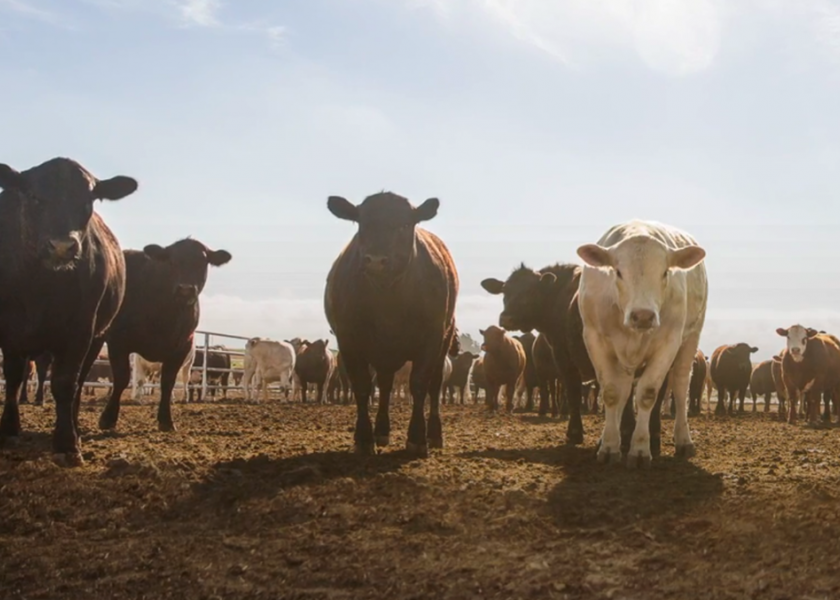Nutritionist Quick Tips on Battling Coccidiosis

If there’s one disease a cattle producer should look out for in starting—300- to 500-pound— cattle, it’s coccidiosis. In this first of two articles, Blaine Corners, Ph.D., senior beef cattle nutritionist with Zoetis offers solid advice on battling the challenges of this parasitic disease.
In operations I work with, coccidiosis poses numerous problems that need to be addressed:
- At least 13 different coccidial species are known to infect cattle in the United States, and cattle may be infected with several species at the same time.1
- Threatens cattle that often have a compromised immune system.
- Nearly 95% of cases are subclinical.2
- Impacts the use of nutrients in feed, as well as reducing feed consumption and efficiency.
- Influences a calf’s ability to respond to vaccinations and anti-infectives.
- One study found cocci oocysts in nearly 60% of fecal samples evaluated, but a recent study showed nearly 98% of calves had oocysts present.3,4
- Difficult to identify or diagnose because clinical signs of disease (bloody scours) do not appear until the coccidian life cycle is almost complete; it is hard to effectively treat and make a difference because the gut may be severely damaged.
- With severe coccidiosis outbreaks, it isn’t unheard of to see death rates around 25%.
An approach I’ve used with several producers to help address coccidiosis is to get lightweight calves started on feed and stay healthy. This includes:
- Enough protein, energy and trace minerals in the ration. Ration design with plenty of usable protein and energy, along with trace minerals, is important so calves have the nutrition they need to mount an immune response. When determining ingredients and nutrient density, consider that calves might not consume as much feed initially as projected.
- Highly palatable ration. Feed intake is a challenge in lightweight calves, but a highly palatable ration encourages feed intake. Along with this, include a coccidiostat in the ration that prevents coccidiosis.
- Proper timing of vaccinations. Once coccidiosis is being adequately addressed through nutrition, vaccine timing is essential for the best immune response. Work closely with your herd veterinarian to identify what vaccines are needed and the timing of those vaccinations for your geographical area.
- Address bovine respiratory disease (BRD). After coccidiosis depresses the calf’s immune system, BRD becomes the real killer. Nutritionists and veterinarians need to work together to control BRD with good management and effective injectable antibiotics and/or medicated feed additives.
Once calves are healthy, you can then direct energy to growth versus fighting disease. So, in addition to continued coccidiosis management, this is when you can incorporate an ionophore such as Bovatec® and an appropriate Synovex® implant to help sustain feed intake and improve weight gain.
Managing against coccidiosis early in the coccidia life cycle with the right feed additives is essential for improving the health of lightweight calves. It’s not just coccidiosis you are controlling, it is stopping the cascading effect of complications on cattle health. In my next article, I’ll go into more detail about the impact of coccidiosis infections, particularly on the success of your nutrition, vaccine and antibiotic programs, and offer some tips for diagnosing it.
In the meantime, I encourage you to visit cattlefeedadditives.com for more information on starting cattle and about feed additive solutions Zoetis offers.
Do not use Bovatec in calves to be processed for veal. Do not allow horses or other equines access to feeds containing lasalocid, as ingestion may be fatal. Feeding undiluted or mixing errors resulting in excessive concentrations of lasalocid could be fatal to cattle and sheep.
Do not use Synovex products in veal calves. Refer to label for complete directions for use, precautions, and warnings.
Dr. Corners’ next article discussing the impact of coccidiosis infections will post here on the Stocker Solutions Learning Center.
References:
1 Ernst JV, Benz GW. Intestinal coccidiosis in cattle. Vet Clinics N Amer: Food Anim Pract. 1986;2(2):283-291.
2 Muirhead, S. 1989. Coccidiosis infections often go undetected in beef, dairy cattle. Feedstuffs. 15:87.
3 Stromberg BE, Gasbarre LC, Ballweber LR, et al. Prevalence of internal parasites in beef cows in the United States: results of the National Animal Health Monitoring System’s (NAHMS) beef study, 2007–2008. Can J Vet Res. 2015;79(4):290–295.
4 Data on file, Study Report No. 17CRGMFA-01-03, Zoetis Inc.







